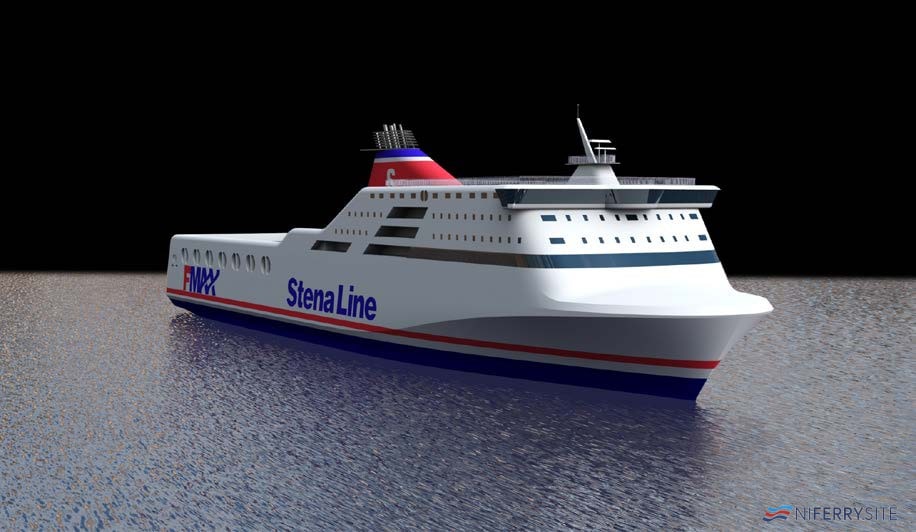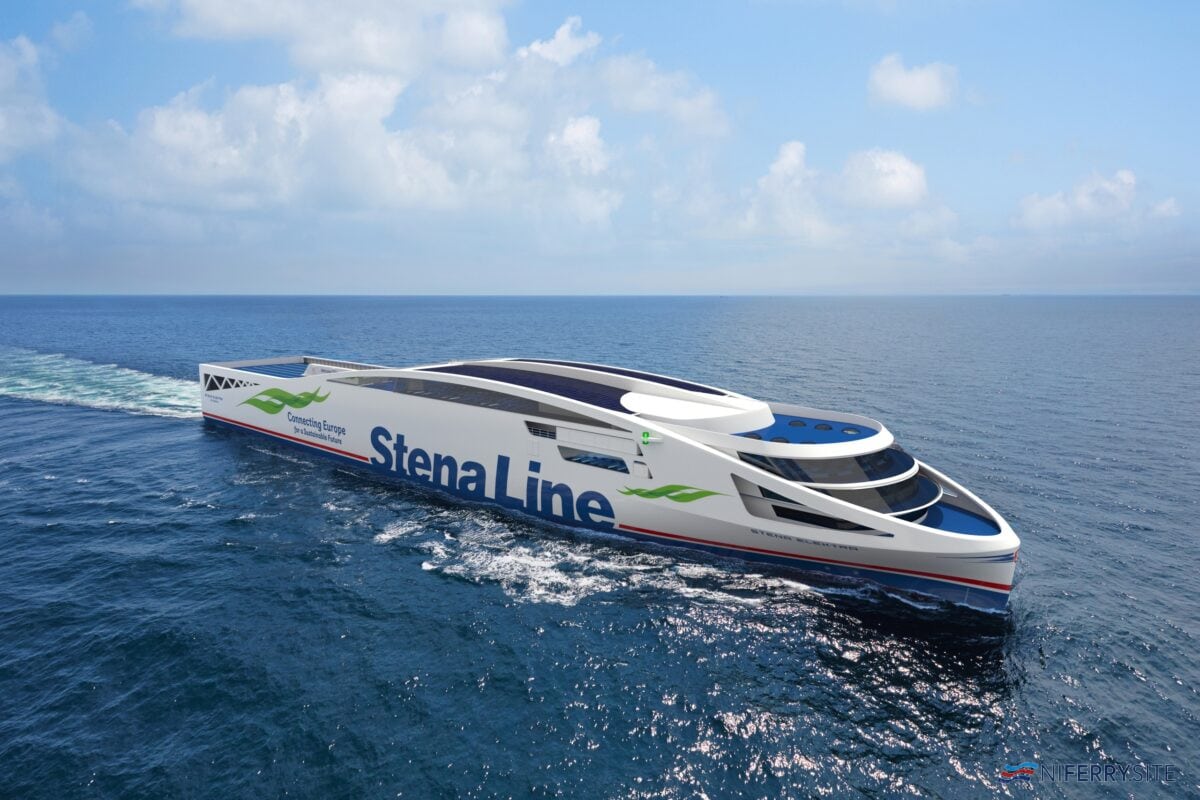Stena Line has announced that it expects to order its first fully electric ferry by 2025 at the latest. The Stena Elektra project, a concept to have a fully-electric ferry in place on the Gothenburg – Frederikshavn route by 2030, is now proceeding to building a commercial vessel. The project has been developed by Stena’s in-house technical consultant, Stena Teknik.
The company expects to finalise design specifications within a year. Whilst battery-electric ferries are nothing new, Stena Elektra will be the first large seagoing ferry to run solely on fossil-free power. The 200m long vessels will cary both passengers and freight vehicles in a flexible configuration.

Capacity will be similar to the Stena E-Flexer series with 1,000 passengers and 3000 linear metres of vehicles able to be accommodated. At present the company intends to have two Elektra vessels in service on the Frederikshavn route by 2030.
Unlike the E-Flexer ships such as STENA EDDA and STENA EMBLA, Stena Elektra will have totally fossil-free propulsion.
Commenting on the project, Niclas Mårtensson, CEO Stena Line Group said:
We are now transforming Stena Elektra from a vision to a commercial viable vessel. Within a year we plan to present the outline specifications and latest 2025 we plan to order the first vessel. This will be a quantum leap in short-sea shipping and a huge step towards fossil-free shipping.
Stena has been conducting a number of studies as part of the development of Stena Elektra. Perhaps the most significant is running one of the existing Gothenburg – Frederikshavn vessels, STENA JUTLANDICA, on battery power for part of the time. This project, which has been running since 2018, has provided a valuable insight into running a seagoing ferry on battery power in non-lab conditions.

The aim is that Stena Elektra will be able to run totally on battery power for a distance of at least 50 nautical miles. The vessels will then charge its batteries whilst in port. In order to reach the 50nm target, the weight of the vessel has been reduced as much as possible.
Stena has already done much to reduce weight and improve efficiency on its current E-Flexer series of vessels. Stena Elektra will take this further, building on the knowledge gained from the Stena E-Flexer project and others from across the Stena Sphere.
The use of lightweight composite materials in the structure of Stena Elektra, something previously looked at as part of the shelved F-max project for Larne – Fleetwood ferries, is one such way weight will be saved. Another is the elimination of all unnecessary systems and increased use of technology and AI. The hull itself will be constructed from high tensile steel.

The installation of batteries of a capacity of around 70 mWh and the ability to charge them during a standard turnaround are two of the major challenges that have had to be overcome. In part, battery consumption will also be reduced by the installation of solar panels on the specially shaped top deck.
Commenting further on the electrification of shipping, Niclas Mårtensson, CEO Stena Line and member of the Swedish Government Electrification Commission said:
The electrification of shipping has only just began. We see a great potential for both battery hybrids and battery powered vessels on several of our short-sea shipping routes in the future. But, it takes more than the electrical ships, we also need to develop the infrastructure and charging possibilities in the ports and terminals in the same pace and that is a reason why collaborations projects like this are so important.”
Stena Line is also looking into combining electrification with other alternative fossil free fuels to extend the range of the vessels. This includes fuel cells, hydrogen and bio methanol. The Gothenburg – Kiel ferry STENA GERMANICA is already partially running on Methanol as part of this research, part of a joint project with Wärtsilä.
As with the Stena Jutlandica battery project, the company has also assessed possible future use of methanol in other members of the fleet. The Stena E-Flexer series was designed with future conversion to methanol without the need to replace major machinery.
While the Stena Elektra ships are initially designed to operate the Gothenburg – Frederikshavn route, the company has not ruled out them being added to additional routes in the future.
The announcement that the Stena Elektra project is to proceed to a physical ship comes alongside an announcement that Stena Line is working with the Port of Gothenburg, as well as truck manufacturers Scania and Volvo, to reduce carbon emissions through truck transportation to and from Gothenburg port to zero.
Known as the ‘Tranzero Initiative‘, the aim is to eventually reduce the 55,000 tonnes of Co2 emitted by trucks transiting to and from the port by 70% by 2030 and eventually to zero.
